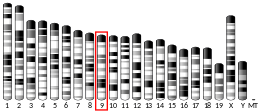NBEAL2
Neurobeachin-like 2 is a protein that in humans is encoded by the NBEAL2 gene.[5]
| NBEAL2 | |||||||||||||||||||||||||
|---|---|---|---|---|---|---|---|---|---|---|---|---|---|---|---|---|---|---|---|---|---|---|---|---|---|
| Identifiers | |||||||||||||||||||||||||
| Aliases | NBEAL2, BDPLT4, GPS, neurobeachin like 2 | ||||||||||||||||||||||||
| External IDs | OMIM: 614169 MGI: 2448554 HomoloGene: 86422 GeneCards: NBEAL2 | ||||||||||||||||||||||||
| |||||||||||||||||||||||||
| |||||||||||||||||||||||||
| |||||||||||||||||||||||||
| Orthologs | |||||||||||||||||||||||||
| Species | Human | Mouse | |||||||||||||||||||||||
| Entrez | |||||||||||||||||||||||||
| Ensembl | |||||||||||||||||||||||||
| UniProt | |||||||||||||||||||||||||
| RefSeq (mRNA) | |||||||||||||||||||||||||
| RefSeq (protein) | |||||||||||||||||||||||||
| Location (UCSC) | Chr 3: 46.98 – 47.01 Mb | Chr 9: 110.62 – 110.65 Mb | |||||||||||||||||||||||
| PubMed search | [3] | [4] | |||||||||||||||||||||||
| Wikidata | |||||||||||||||||||||||||
| |||||||||||||||||||||||||
Function
The protein encoded by this gene contains a beige and Chediak-Higashi (BEACH) domain and multiple WD40 domains, and may play a role in megakaryocyte alpha-granule biogenesis.[5]
Clinical relevance
Mutation in this gene have been shown to cause gray platelet syndrome.[6]
gollark: I was able to fix it, thanks stackoverflow!
gollark: It's not a button, it's a `<select>`.
gollark: AAAAAAAAAAAAACSSWHY CAN I NOT MAKE THAT STUPID ARROW LOOK NICER
gollark: Intereßting idea.
gollark: So a prediction market, but for when mathematical theorems will be solved?
References
- GRCh38: Ensembl release 89: ENSG00000160796 - Ensembl, May 2017
- GRCm38: Ensembl release 89: ENSMUSG00000056724 - Ensembl, May 2017
- "Human PubMed Reference:". National Center for Biotechnology Information, U.S. National Library of Medicine.
- "Mouse PubMed Reference:". National Center for Biotechnology Information, U.S. National Library of Medicine.
- "Entrez Gene: Neurobeachin-like 2". Retrieved 2011-12-30.
- Albers CA, Cvejic A, Favier R, Bouwmans EE, Alessi MC, Bertone P, Jordan G, Kettleborough RN, Kiddle G, Kostadima M, Read RJ, Sipos B, Sivapalaratnam S, Smethurst PA, Stephens J, Voss K, Nurden A, Rendon A, Nurden P, Ouwehand WH (August 2011). "Exome sequencing identifies NBEAL2 as the causative gene for gray platelet syndrome". Nat. Genet. 43 (8): 735–7. doi:10.1038/ng.885. PMC 3428934. PMID 21765411.
Further reading
- So, H. C.; Fong, P. Y.; Chen, R. Y. L.; Hui, T. C. K.; Ng, M. Y. M.; Cherny, S. S.; Mak, W. W. M.; Cheung, E. F. C.; Chan, R. C. K.; Chen, E. Y. H.; Li, T.; Sham, P. C. (2009). "Identification of neuroglycan C and interacting partners as potential susceptibility genes for schizophrenia in a Southern Chinese population". American Journal of Medical Genetics Part B. 153B (1): 103–113. doi:10.1002/ajmg.b.30961. PMID 19367581.
- Albers, C. A.; Cvejic, A.; Favier, R. M.; Bouwmans, E. E.; Alessi, M. C.; Bertone, P.; Jordan, G.; Kettleborough, R. N. W.; Kiddle, G.; Kostadima, M.; Read, R. J.; Sipos, B.; Sivapalaratnam, S.; Smethurst, P. A.; Stephens, J.; Voss, K.; Nurden, A.; Rendon, A.; Nurden, P.; Ouwehand, W. H. (2011). "Exome sequencing identifies NBEAL2 as the causative gene for gray platelet syndrome". Nature Genetics. 43 (8): 735–737. doi:10.1038/ng.885. PMC 3428934. PMID 21765411.
This article incorporates text from the United States National Library of Medicine, which is in the public domain.
This article is issued from Wikipedia. The text is licensed under Creative Commons - Attribution - Sharealike. Additional terms may apply for the media files.



